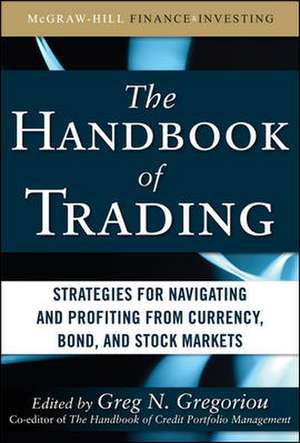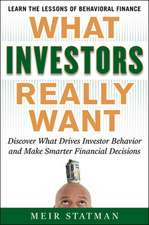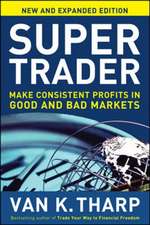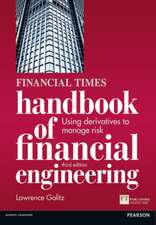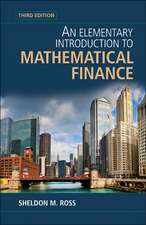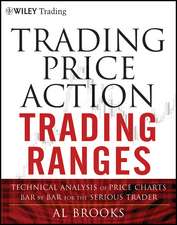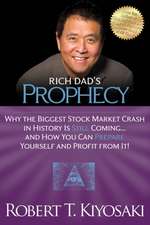The Handbook of Trading: Strategies for Navigating and Profiting from Currency, Bond, and Stock Markets
Autor Greg Gregoriouen Limba Engleză Hardback – 16 iun 2010
“This book provides a collection of papers that examine tradingexecution, technical trading, and trading strategies, as well as algorithmsin different markets (equities, forex, fixed income, exchange traded funds,derivatives, and commodities) around the world. This is particularly relevantgiven the recent explosion in trading volumes.”
Tarun Chordia, R. Howard Dobbs Chair in Finance,Goizueta Business School, Emory University
“This book uses a number of well-respected authors in the area of asset trading.It provides a comprehensive analysis of trading-related issues coveringmomentum trading, algorithmic trading, the use of technical trading rules,strategies for ETFs, and the role of trading volume.”
Professor John Cotter, Director of the Centre for Financial Markets,University College Dublin School of Business, University College Dublin
“The Handbook of Trading is a good reference tool for both practitionersand academics. The contents cover a wide range of topical issues.”
Professor Robert McGee, Director of the Center for Accounting, Auditing, and Tax Studies,College of Business Administration, Florida International University
About the Book:
Given today’s market volatility, eventhe most advanced investors can beunsure of their next move. Ratherthan rely on one or two individuals who claimgeneral knowledge on any given investingtopic, you need the advice of professionalswho have spent their entire careers developingreal expertise on more focused sectors ofthe market.
The Handbook of Trading is the only bookavailable that provides just that.Greg N. Gregoriou has amassed forty of theworld’s top academics, researchers, and practitionerswho explain how to make today’smarkets work for you. With this highly technicalbut ultimately practical guide, you haveaccess to a broad array of trading strategiesthat will put you light years ahead of thecompetition—regardless of the state of themarket.
From technical analysis and momentumtrading to algorithmic and FOREX trading,The Handbook of Trading introduces you totechniques and insights never before published,each of which has been rigorouslyback-tested and analyzed. Chapters include:
- Performance Leakage and ValueDiscounts on the Toronto StockExchange
Lawrence Kryzanowskiand Skander Lazrak - Trading in Turbulent Markets: DoesMomentum Work?
Tim A. Herbergerand Daniel M. Kohlert - Profitability of Technical Trading Rulesin an Emerging Market
DimitrisKenourgios and Spyros Papathanasiou - Leveraged Exchange-Traded Fundsand Their Trading Strategies
NaratCharupat - The Impact of Algorithmic TradingModels on the Stock Market
OhannesG. Paskelian
The Handbook of Trading is the go-to guidefor financial professionals seeking profits intoday’s currency, bond, and stock markets.
Correlating PowerPoint slides and readingquestions created by the contributors appear onhttp://www.mhprofessional.com/handbookoftrading.
Preț: 589.46 lei
Preț vechi: 854.83 lei
-31% Nou
Puncte Express: 884
Preț estimativ în valută:
112.81€ • 116.54$ • 93.88£
112.81€ • 116.54$ • 93.88£
Carte tipărită la comandă
Livrare economică 27 martie-02 aprilie
Preluare comenzi: 021 569.72.76
Specificații
ISBN-13: 9780071743532
ISBN-10: 0071743537
Pagini: 462
Dimensiuni: 160 x 236 x 38 mm
Greutate: 0.82 kg
Editura: McGraw Hill Education
Colecția McGraw-Hill
Locul publicării:United States
ISBN-10: 0071743537
Pagini: 462
Dimensiuni: 160 x 236 x 38 mm
Greutate: 0.82 kg
Editura: McGraw Hill Education
Colecția McGraw-Hill
Locul publicării:United States
Cuprins
Section One: Execution and Momentum Trading; Chapter 1. Performance Leakage and Value Discounts on the Toronto Stock Exchange; Chapter 2. Informed Trading in Parallel Auction and Dealer Markets: The Case of the London Stock Exchange; Chapter 3. Order Placement Strategies in Different Market Structures; Chapter 4. Momentum Trading for the Private Investor; Chapter 5. Trading in Turbulent Markets: Does Momentum Work; Chapter 6. The Financial Futures Momentum; Section Two: Technical Trading; Chapter 7. Profitability of Technical Trading Rules in an Emerging Market; Chapter 8. Testing Technical Trading Rules as Portfolio Selection Strategies; Chapter 9. Do Technical Trading Rules Increase the Probability of Winning: Empirical Evidence from the Foreign Exchange Market; Chapter 10. Technical Analysis in Turbulent Financial Markets: Does Nonlinearity Assist; Chapter 11. Profiting from the Dual Moving Average Cross-Over with Exponential Smoothing; Chapter 12. Shareholder Demands and the Delaware Derivative Action; Section Three: Exchange Traded Fund Strategies; Chapter 13. Leveraged Exchanged-Traded Funds and their Trading Strategies; Chapter 14. On the Impact of Exchange-Traded Funds over Noise Trading: Evidence from European Stock Exchanges; Chapter 15. Penetrating Fixed Income ETFs; Chapter 16. Smoothing Transition Autoregressive (STAR) Models for the Day of the Week Effect: An Application to S&P 500 Index; Section Four: Foreign Exchange Markets, Algorithmic Trading, and Risk; Chapter 17. Disparity of USD Interbank Interest Rates in Hong Kong and Singapore: Is There Any Arbitrage Opportunity; Chapter 18. Forex Trading Opportunities Through Prices Under Climate Change; Chapter 19. The Impact of Algorithmic Trading Models on the Stock Market; Chapter 20. Trading in Risk Dimensions; Chapter 21. Development of a Risk-Monitoring Tool Dedicated to Commodity Trading; Section Five: Trading Volume and Behavior; Chapter 22. Securities Trading, Asymmetric Information, and Market Transparency; Chapter 23. Arbitrage Risk and the High-Volume Return Premium; Chapter 24. The Impact of Hard vs. Soft Information on Trading Volume: Evidence from Management Earnings Forecasts; Chapter 25. Modeling Bubbles and Anti-Bubbles in Bear Markets: A Medium-Term Trading Analysis; Chapter 26. Strategic Financial Intermediaries with Brokerage Activities; Chapter 27. Financial Markets, Investment Analysis, and Trading in Primary and Secondary Markets; Chapter 28. Trading and Overconfidence; Chapter 29. Correlated-Asset Trading and Disclosure of Private Information
